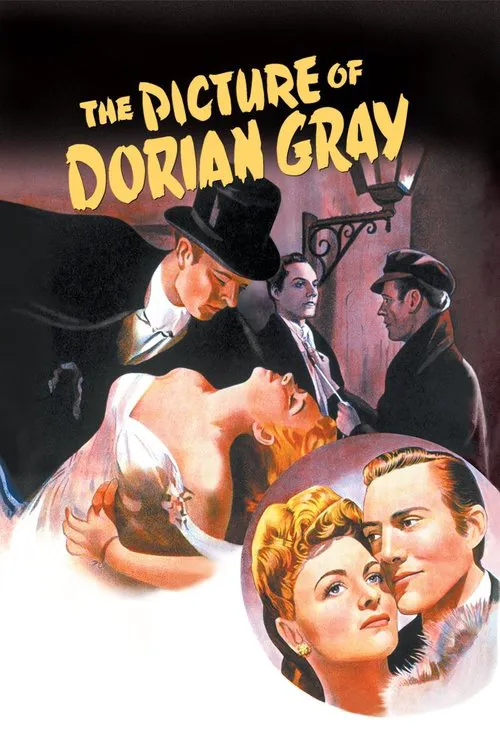The Picture of Dorian Gray

Plot
In the late 19th century, Oscar Wilde's philosophical exploration of vanity, morality, and the consequences of unchecked desire comes to life through the masterpiece, "The Picture of Dorian Gray". This thought-provoking film is a captivating tale of a young man's descent into debauchery and self-destruction, all while maintaining a youthful beauty that only grows more captivating with each passing day. The 1945 film adaptation, directed by Albert Lewin, takes viewers on a wild and unsettling ride through the complexities of human nature. The story begins with Dorian Gray, a stunningly handsome young man, portrayed by George Sanders. On a fateful evening, Dorian meets the illustrious artist Basil Hallward, played by George Sanders' counterpart, Hurd Hatfield. Enchanted by Dorian's captivating beauty, Basil becomes obsessive with capturing his likeness on canvas. During a conversation about the fleeting nature of beauty, Dorian makes a Faustian bargain, wishing that his portrait would age instead of himself. That night, something inexplicable happens: Dorian's portrait begins to reflect the true state of his soul. As time passes, while Dorian maintains his youthful appearance, his portrait ages and becomes increasingly twisted, reflecting the ugliness that has grown within him. Basil becomes aware of the dark energies surrounding Dorian and warns him of the dangers of vanity and the pursuit of eternal youth. However, Dorian refuses to listen, and his obsession with his own beauty intensifies. He becomes reckless and promiscuous, engaging in acts of cruelty and debauchery. He manipulates those around him, including his friends, Lord Henry Wotton and Sybil Vane's brother Alan Campbell, to achieve his desires. As the years go by, Dorian's portrait becomes a macabre reflection of his decaying soul, revealing his inner world to those who witness it. The portrait becomes an object of fascination and terror for those who see it. Even Basil, who initially dismissed the events as mere superstition, becomes transfixed by the painting's grotesque visage. They cannot help but stare at the portrait, horrified by the manifestation of Dorian's evil. Basil, consumed by guilt and regret for allowing Dorian to become so lost, begins to see his own dark impulses reflected in the portrait as well. While Dorian's descent into depravity accelerates, he starts to become disillusioned with the empty, meaningless life he has created. He tries to rid himself of his portrait, but his attempts only intensify the cycle of horror and terror that surrounds him. The painting, once a manifestation of his vanity, has now become a cruel reminder of his own corruption and the true nature of his soul. As Basil tries to intervene and save Dorian from himself, it becomes clear that he has become trapped in his own web of deceit. Basil, driven by jealousy and despair, attempts to destroy the portrait, unaware that this will ultimately lead to his own demise. In a shocking finale, Basil is killed, and Dorian's portrait reverts to its natural state of beauty, reflecting the death of Basil. This development also serves to underscore the devastating realization that the true horror was not the portrait itself, but rather the reflection of Dorian's own corrupt nature that had grown beyond redemption. In "The Picture of Dorian Gray", the audience is left to ponder the tragic consequences of unchecked vanity and the pursuit of beauty at any cost. Wilde's masterpiece presents a haunting, unsettling exploration of the human condition, where the pursuit of eternal youth and beauty can only lead to ruin and decay. As viewers, we are invited to confront our own darker impulses and to examine the nature of goodness and evil within ourselves.
Reviews
Recommendations




